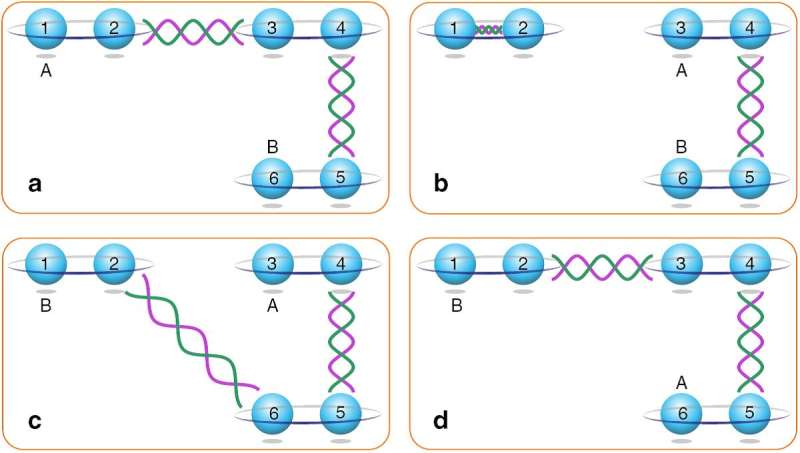Scientists discover particles similar to Majorana fermions

Majorana fermions were first proposed by the physicist Ettore Majorana in 1937. They are fermion particles that are also their own antiparticles. These fermions are vital to the research of superconducting materials and topological quantum computation. However, 80 years later, scientists have not found a Majorana elementary particle. Though it is hypothesized that neutrinos are Majorana fermions, there is still no evidence to support this conjecture.
In condensed matter physics, scientists found that a particlular kind of quasiparticle—Majorana zero modes (MZMs)—have characteristics similar to Majorana fermions. Recently, a research team from the Key Laboratory of Quantum Information of the Chinese Academy of Sciences achieved the fabrication and manipulation of MZMs in an optical simulator.
The team led by Professors LI Chuangfeng, XU Jinshi, and HAN Yongjian implemented the exchange of two MZMs such that the non-Abelian statistics of MZMs are supported. This work is published in Nature Communications on October 25th.
Generally, the statistics of the identical particles can be determined by their exchange characteristics. For example, the internal quantum states remain the same when two bosons are exchanged, and are imposed by a pi phase when two fermions are exchanged. The bosons and fermions belong to particles with more general statistics, called Abelian anyons. A global phase (not necessarily 0 or pi) is gained after the exchange of two identical Abelian anyons.
Moreover, there may exist some exotic particles, called non-Abelian anyons, which undertake a unitary transformation (not just a global phase) after exchange. The Majorana fermions with their own antiparticles are widely believed to be non-Abelian particles.
The research team took advantage of the quantum simulation approach: While the simulated system is not experimentally accessible with current technology, the quantum simulator and its measurement results provide information about the simulated system.
In their work, they designed a set of dissipative processes that can effectively create and transfer the MZMs supported in the Kitaev model. The researchers then completed the exchange of two MZMs. The Berry phase the researchers measured during the exchange process supports the non-Abelian statistics of MZMs. Furthermore, they demonstrate that the information encoded in the MZMs is immune to local noises in the linear optical system.
The method established here provides a novel way to study quantum statistics, topological quantum computation and the characteristics of MZMs. Moreover, this achievement establishes a promising platform to investigate the properties of the MZMs in complex architectures and topological quantum computation based on MZMs.
Journal information: Nature Communications
Provided by Chinese Academy of Sciences

















